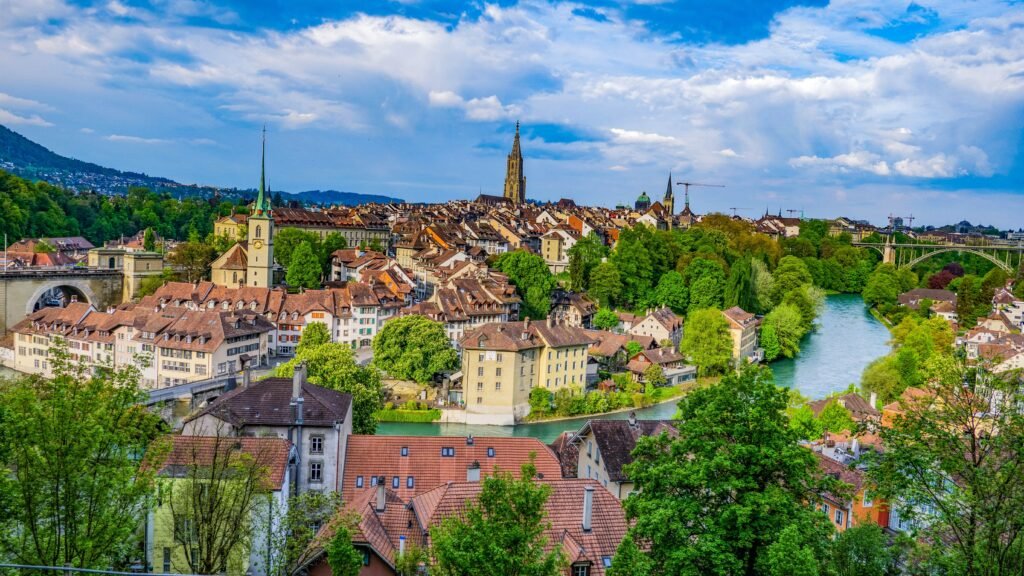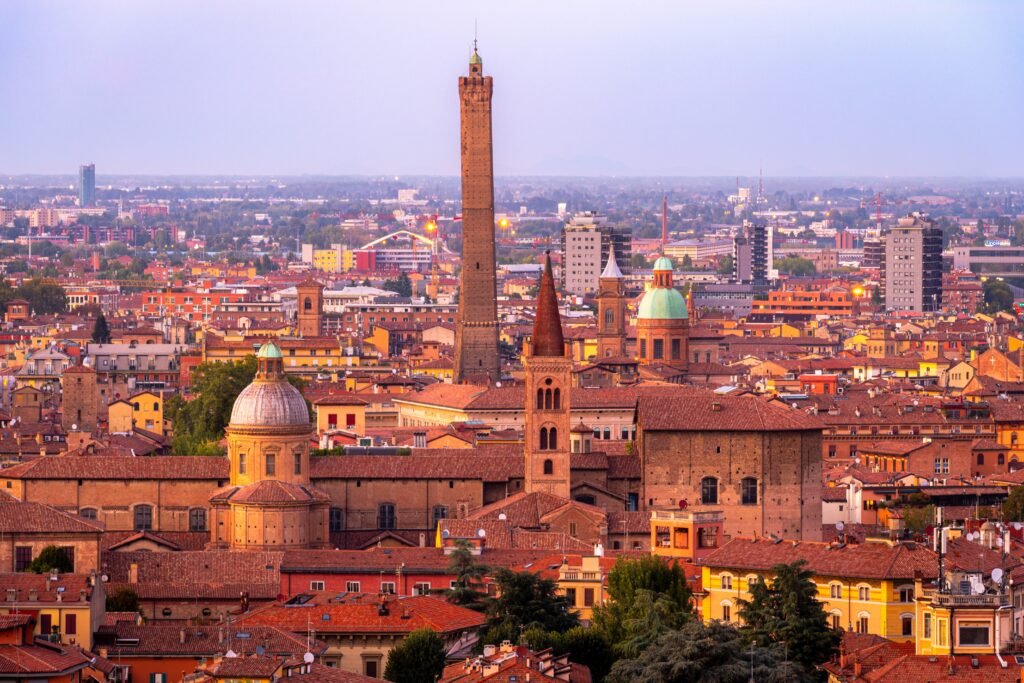When it comes to the Balearic Islands, many travelers often think of bustling Ibiza or glamorous Mallorca. However, tucked away in the Mediterranean Sea lies a lesser-known gem waiting to be explored – Minorca (or Menorca), the second-largest island in this archipelago. Despite being often overshadowed by its more famous neighbors, Minorca is a true paradise for those seeking a tranquil and authentic Mediterranean experience. With its stunning beaches, rich history, and unique cultural heritage, Minorca offers a perfect blend of relaxation and exploration.
In the following text, I will write Minorca somewhere and Menorca somewhere, so that there is no confusion, it is the same. If you are planning a trip to this island, see here for travel insurance and here for flights.
Table of Contents
A Brief Overview of Minorca:
Geography and Landscape: Minorca is the easternmost island among the Balearic Islands, situated in the western Mediterranean Sea. It lies about 250 kilometers off the coast of mainland Spain. The island has a relatively flat and hilly terrain, with its highest point being Mount Toro, reaching an elevation of 358 meters. Despite its modest size, Minorca boasts an astonishing variety of landscapes, from dramatic cliffs and rugged coastlines to rolling hills and verdant valleys.
UNESCO Biosphere Reserve: In recognition of its outstanding natural and cultural significance, Minorca was designated as a UNESCO Biosphere Reserve in 1993. This status highlights the island’s commitment to preserving its unique ecosystems, biodiversity, and traditional practices, striking a balance between human activity and nature conservation.
Climate: Minorca enjoys a Mediterranean climate, characterized by hot, dry summers and mild, wet winters. During the summer months, temperatures can reach around 30°C (86°F), making it an ideal destination for beach lovers and sun-seekers. Winters are generally mild, with temperatures rarely dropping below 10°C (50°F).
Prehistoric Heritage: Minorca is steeped in prehistoric history, with archaeological evidence of human settlement dating back to the Talayotic period, which spans from 2000 BCE to 1000 BCE. The Talayotic culture left behind an impressive array of megalithic structures, including navetas (burial chambers shaped like overturned boats), talaiots (tower-like structures), and taulas (T-shaped stone monuments). These ancient sites offer a fascinating glimpse into the island’s early civilizations.
British and Spanish Influence: Throughout its history, Minorca has changed hands multiple times, which is evident in its diverse architecture and cultural heritage. The British ruled the island for much of the 18th century, leaving behind Georgian-style buildings and a unique Anglican influence. The Spanish regained control in the 19th century, and today, both British and Spanish elements coexist harmoniously, adding to the island’s charm.

Traditional Crafts: Minorca has a rich tradition of crafts that are still practiced by locals today. A notable example is the craftsmanship of avarcas, traditional Menorcan sandals made from leather and rubber. These durable and comfortable sandals have become iconic symbols of the island and are popular souvenirs for visitors.
Cami de Cavalls: The Cami de Cavalls is an ancient coastal trail that encircles the entire island, spanning approximately 185 kilometers. Historically used for surveillance and defense, the trail now serves as a popular hiking and horse-riding route, allowing visitors to explore some of the most beautiful and remote parts of Minorca’s coastline.
Sustainable Tourism: In recent years, Minorca has focused on promoting sustainable tourism, aiming to protect its natural beauty and cultural heritage. Efforts have been made to limit large-scale developments and preserve the island’s unique identity, ensuring that future generations can enjoy its unspoiled beauty.
Overall, Minorca stands as a haven for those seeking an authentic, peaceful, and culturally rich destination in the Mediterranean. Whether you are interested in exploring historical sites, basking on beautiful beaches, or indulging in local gastronomy, this hidden gem has something to offer every traveler.
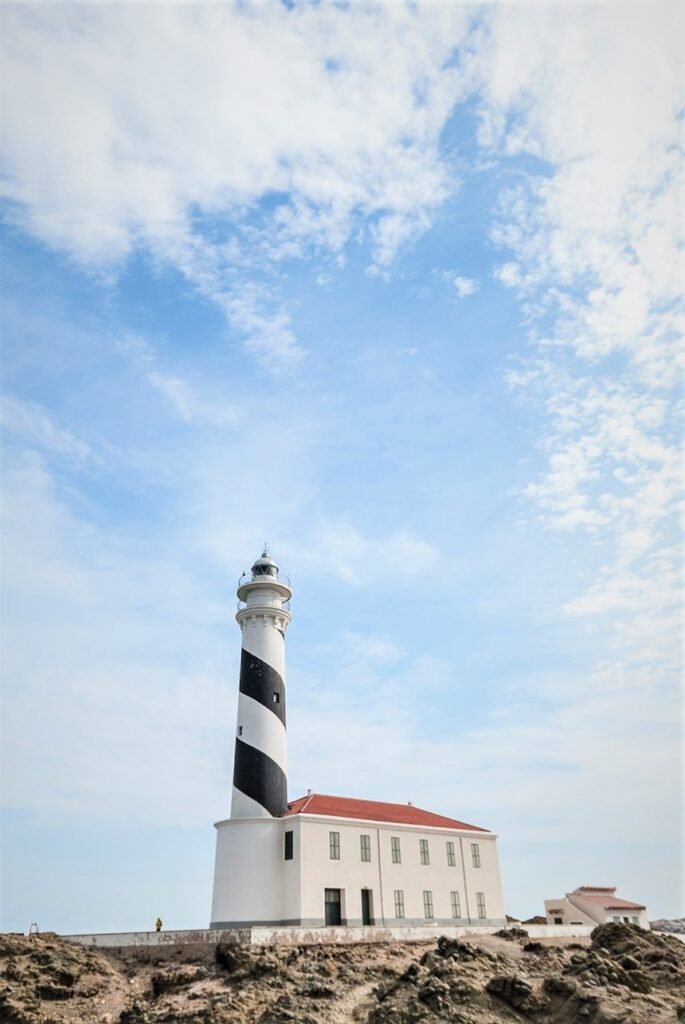
Enchanting Beaches:
The enchanting beaches of Minorca are among the island’s biggest attractions and are sure to leave a lasting impression on any traveler. Here are some more details about these stunning coastal wonders:
1. Cala Macarella and Cala Macarelleta: Nestled on the southwestern coast, Cala Macarella and its smaller sister beach, Cala Macarelleta, are postcard-perfect coves with crystal-clear turquoise waters and powdery white sand. Surrounded by cliffs and lush vegetation, these beaches offer a tranquil escape from the outside world. The idyllic scenery and calm waters make them ideal for swimming, snorkeling, and sunbathing. Cala Macarelleta is a short walk away from Cala Macarella and is known for its strikingly beautiful setting.
2. Cala Turqueta: Located a short distance from Cala Macarella, Cala Turqueta is another gem along the southwestern coast. As the name suggests, this beach features mesmerizing turquoise waters that captivate visitors at first sight. The contrast between the blue sea and the white sand creates a surreal and picturesque landscape. Sun loungers and umbrellas are available for rent, making it a comfortable spot to spend the day.
3. Cala Mitjana and Cala Mitjaneta: These two neighboring beaches are situated on the southern coast of Minorca and offer a more secluded and intimate setting. Cala Mitjana features soft golden sand and shallow, crystal-clear waters, making it ideal for families with children. For those seeking an even quieter experience, a short walk from Cala Mitjana leads to Cala Mitjaneta, a smaller and less crowded cove with equally stunning views.
4. Cala en Turqueta: Located on the west coast of the island, Cala en Turqueta is renowned for its natural beauty and unspoiled surroundings. Surrounded by pine forests and sand dunes, this beach feels like a hidden paradise. The turquoise waters are perfect for swimming and snorkeling, and the peaceful atmosphere invites visitors to relax and enjoy the serenity.
5. Cala Pregonda: Situated on the northern coast of Minorca, Cala Pregonda stands out with its unique reddish-golden sand, a rare sight on the island. To reach this beach, you can take a scenic hike along the Cami de Cavalls or approach by sea. The beach is surrounded by red cliffs and interesting rock formations, adding to its allure. Its remote location ensures a peaceful and uncrowded experience.
6. Son Bou: For those looking for a larger beach experience, Son Bou on the southern coast is the place to go. With over 2 kilometers of golden sand, it is the longest beach on the island. Despite its size, Son Bou manages to retain a charming and laid-back atmosphere. It is well-equipped with facilities and water sports opportunities, making it a popular choice for families and active beachgoers.
7. Cala Galdana: Situated on the southern coast, Cala Galdana is a picturesque horseshoe-shaped bay surrounded by cliffs covered in lush greenery. The gentle slope of the beach and the calm waters make it an excellent spot for swimming and paddling. Numerous shops, bars, and restaurants line the shore, providing convenience for visitors.
Whether you prefer intimate and secluded coves or larger beaches with more amenities, Minorca’s coastline offers a diverse range of options to satisfy every beach lover. Each beach is a testament to the island’s natural beauty, and spending time on these enchanting shores is a truly unforgettable experience
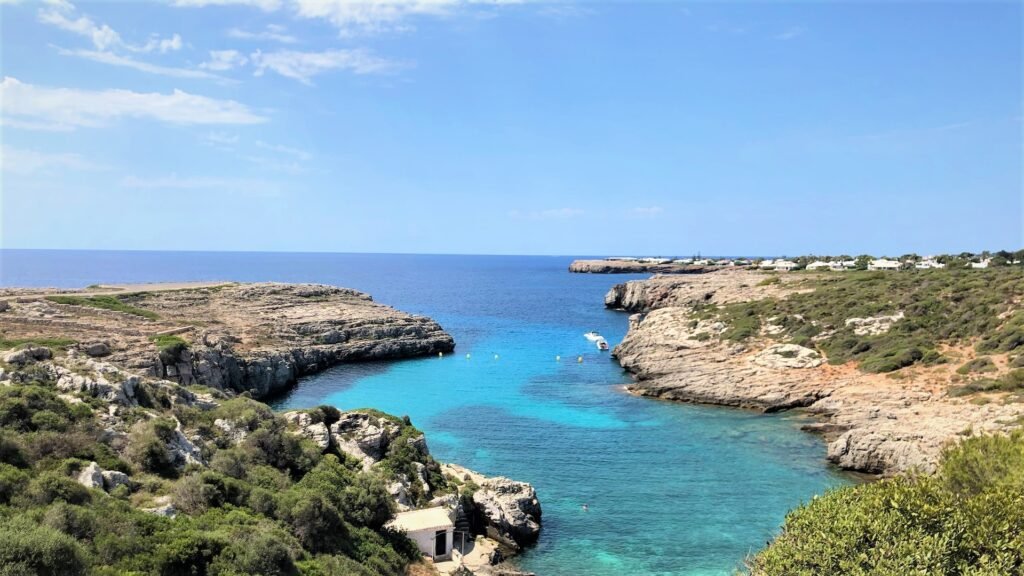
A Journey Through History:
A journey through history in Minorca is a captivating experience that takes you on a fascinating exploration of the island’s rich past, from ancient civilizations to colonial influences. Here are some highlights of the historical journey you can embark upon while visiting Minorca:
1. Talayotic Culture: As mentioned earlier, Minorca’s history dates back thousands of years to the Talayotic period. The island is home to an exceptional collection of megalithic structures built by the Talayotic culture. These prehistoric sites are unique to the Balearic Islands and offer a glimpse into the lives and beliefs of the island’s early inhabitants. Some of the most notable Talayotic sites include the Naveta d’Es Tudons, a well-preserved burial chamber, and the Torre d’en Galmés, a large settlement with impressive talaiots and taulas.
2. Roman Occupation: During the Roman era, Minorca, known as “Minor,” was an important part of the Roman Empire. The Romans left their mark on the island through the construction of roads, aqueducts, and other infrastructure. One of the most significant Roman sites is the Roman Basilica of Son Bou, the remains of a large Roman town that once stood there.

3. Moorish Influence: In the early Middle Ages, Minorca fell under Moorish rule as part of the Umayyad Caliphate. The Moors, with their advanced knowledge of agriculture and irrigation, left a lasting impact on the island’s landscape and culture. Although their rule was relatively short-lived, it is an essential chapter in Minorca’s history.
4. British Rule: The 18th century saw British occupation of the island during the War of the Spanish Succession. The British influence is evident in some of the architectural styles seen in Mahón, the capital, such as Georgian buildings and the English-style Mola Fortress.
5. Battle of Minorca: In the mid-18th century, Minorca became the stage for a significant naval battle known as the Battle of Minorca (1756). This battle saw the British fleet defeated by the French, leading to the loss of the island to France. However, the British regained control of Minorca in 1763 after the Treaty of Paris.
6. The Importance of Mahón’s Natural Harbor: Mahón’s natural harbor, one of the largest in the world, played a crucial role in the island’s history. It provided a strategic location for naval fleets, and control of the harbor was sought after by various European powers throughout the centuries.
7. Architectural Heritage: Throughout Minorca, you can find an array of architectural styles, reflecting the island’s diverse history. Romanesque churches, Moorish-influenced buildings, British colonial structures, and traditional Menorcan architecture coexist harmoniously, creating a unique and charming urban landscape.
As you journey through Minorca’s history, visiting its archaeological sites, museums, and historical landmarks, you’ll gain a deeper understanding of the island’s cultural roots and the various civilizations that have shaped its identity over the millennia. The historical richness of Minorca adds a layer of depth to your travel experience and leaves you with a profound appreciation for this enchanting Mediterranean island.

The Graceful Capital – Mahón (Maó):
Mahón (Maó): The Graceful Capital of Menorca
Mahón, also known as Maó in the local Catalan dialect, is the capital city of Menorca and the administrative center of the island. Located on the eastern coast of Menorca, Mahón is set around one of the world’s most magnificent natural harbors. This graceful city boasts a fascinating blend of history, culture, and natural beauty, making it a must-visit destination during your trip to Menorca.
1. The Natural Harbor – A Nautical Haven: Mahón’s natural harbor, known as the Port of Mahón or Port Maó, is a vast and deep bay that stretches over five kilometers inland, making it one of the largest natural harbors in the world. The harbor has played a significant role in the city’s history, attracting different civilizations due to its strategic importance. As you stroll along the waterfront or take a boat tour, you’ll be captivated by the stunning views of the sparkling blue waters and the charming surrounding landscape.
2. Historical Landmarks: Mahón’s historical heritage is evident throughout the city, with numerous landmarks and architectural gems that tell the story of its past. The Church of Santa Maria is a prominent landmark, featuring a mix of architectural styles, including Gothic and Baroque elements. Its impressive rose window is particularly captivating.
3. La Mola Fortress: Perched on a cliff overlooking the entrance to the harbor, La Mola Fortress is an iconic symbol of Mahón’s military history. Built by the British in the 19th century, this massive fortification once served to protect the harbor and the city. Today, it stands as a testament to the island’s British colonial era and offers visitors the chance to explore its underground passages and enjoy breathtaking panoramic views.
4. Cultural Scene: Mahón is not only rich in historical landmarks but also home to a vibrant cultural scene. The city hosts various events and festivals throughout the year, showcasing traditional music, dance, and arts. The Teatre Principal de Maó, the island’s main theater, offers a diverse program of performances, including theater, music, and dance, providing entertainment for both locals and visitors.
5. Gastronomy: Exploring the streets of Mahón will lead you to an array of delightful eateries, cafes, and restaurants. Don’t miss the chance to sample local culinary delights, such as Caldereta de Langosta (lobster stew) and Sobrasada, a traditional spicy sausage of Menorca. Seafood enthusiasts will be in for a treat with fresh catches from the nearby Mediterranean waters.
6. Mercat des Claustre: A visit to Mahón’s Mercat des Claustre (Market of the Cloister) is a delightful experience. This bustling market, located in a beautifully restored 19th-century convent, offers a vast array of fresh local produce, artisanal goods, and souvenirs. It’s an excellent place to immerse yourself in the local flavors and craftsmanship.
7. Plaza del Carmen: The heart of Mahón’s old town is Plaza del Carmen, a picturesque square lined with charming buildings and outdoor cafes. This bustling plaza is a great spot to relax, people-watch, and soak in the laid-back ambiance of the city.
Mahón’s graceful blend of history, natural beauty, and cultural vibrancy make it a captivating destination that beckons travelers to explore its charms. Whether you’re admiring the panoramic views from a fortress, strolling along the harbor’s edge, or savoring local delicacies, the city promises a memorable experience that showcases the best of Menorca’s island life.
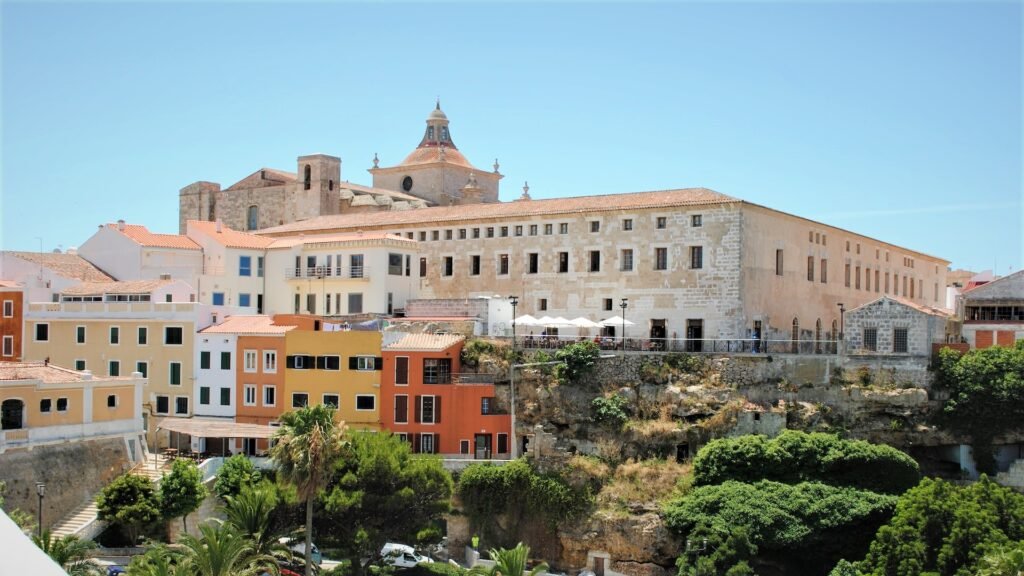
Festivals and Local Traditions in Menorca:
Festivals and local traditions are an integral part of life in Menorca, reflecting the island’s rich cultural heritage and deep-rooted customs. These vibrant celebrations offer a unique opportunity for visitors to experience the authentic spirit of Menorca and immerse themselves in the local way of life. Here are some of the most significant festivals and traditions you might encounter during your visit:
1. Sant Joan Festival: The Sant Joan Festival is one of the most celebrated and lively events in Menorca, held annually on June 23rd and 24th. It marks the summer solstice and is a tribute to Saint John the Baptist. The festival kicks off with the famous “Jaleo,” a unique equestrian show where riders called “caixers” skillfully guide their horses to rear up on their hind legs amidst the cheering crowds. Following the Jaleo, there are parades, traditional folk music, street parties, and fireworks. It’s a magical time when the island comes alive with music, dancing, and merriment.

2. Fiesta de San Juan: Similar to the Sant Joan Festival, the Fiesta de San Juan is celebrated on June 24th in Ciutadella, the former capital of Menorca. This festival also features equestrian displays, parades, and festive gatherings, with locals and visitors alike participating in the festivities. The “Jocs des Pla” is a highlight of the celebration, where horse riders compete in a series of skillful challenges.
3. Mare de Déu de Gràcia Festival: Held in Mahón, the Mare de Déu de Gràcia Festival is celebrated in early September to honor the patron saint of the city. The festivities include processions, concerts, traditional dances, and a colorful maritime procession where boats decorated with flowers circle the harbor. The atmosphere is filled with religious devotion and joyful celebration.
4. Horse Riding and Equestrian Traditions: Equestrian traditions are deeply ingrained in Menorcan culture, and you can witness these unique customs during various festivals and celebrations. The traditional Menorcan breed of horse, known as the “Cavall Menorquí,” plays a central role in the island’s equestrian events. Horse shows, dressage displays, and parades are a common sight during festivals, offering a glimpse into the island’s rich equestrian heritage.
5. Saint Anthony’s Day: On January 17th, Menorcans celebrate the feast day of Saint Anthony, the patron saint of animals. To mark the occasion, locals participate in the “Beneïdes,” a blessing of the animals, where people bring their pets and farm animals to be blessed by the priest. It’s a heartwarming and charming tradition that highlights the islanders’ close connection with their animals.
6. Traditional Music and Dance: Throughout the year, you may have the opportunity to enjoy traditional Menorcan music and dance performances. “Jaleo,” the equestrian show during the Sant Joan Festival, is often accompanied by folk music played on traditional instruments like the “xeremia” (a type of bagpipe) and “flabiol” (a small flute). The “jotas,” traditional dance performances, are also popular during local festivities.
7. Artisanal Crafts: Artisanal crafts are an essential part of Menorcan traditions, and you can witness skilled artisans at work during festivals and in local markets. Craftsmanship like pottery, avarca sandal-making, and jewelry-making are deeply rooted in the island’s heritage, and you may find unique souvenirs and handmade items to take home.
Experiencing the festivals and local traditions of Menorca is a fantastic way to connect with the island’s cultural identity, witness its historical customs, and appreciate the warmth and hospitality of the local community. As you participate in these joyous occasions, you’ll create cherished memories and gain a deeper understanding of the spirit and traditions that make Menorca such a special place.
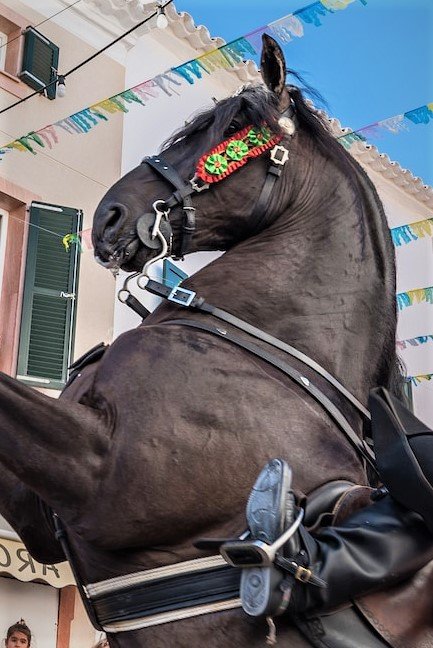
Food:
Menorcan gastronomy is a delightful journey for the taste buds, offering a unique blend of Mediterranean flavors with influences from its diverse history. The island’s cuisine revolves around fresh, local ingredients, showcasing the best of land and sea. From seafood delicacies to traditional Menorcan dishes, here are some highlights of the island’s gastronomy:
1. Caldereta de Langosta (Lobster Stew): Caldereta de Langosta is one of the most famous and beloved dishes in Menorca. It is a rich and flavorful lobster stew made with local lobster, tomatoes, onions, garlic, and a blend of aromatic herbs and spices. The dish is typically served with a side of “alioli,” a garlic mayonnaise, and is a true indulgence for seafood lovers.
2. Arroz de la Tierra (Land Rice): Arroz de la Tierra is a delicious and hearty rice dish that showcases the island’s agricultural products. It typically includes rice, sautéed vegetables like bell peppers, peas, artichokes, mushrooms, and often features the famous Menorcan sausage, “sobrasada.” This flavorful dish is a celebration of the island’s local produce and traditional flavors.
3. Queso de Mahón (Mahón Cheese): Queso de Mahón is the island’s most renowned cheese and has even received Protected Designation of Origin (PDO) status. This semi-hard cheese is made from cow’s milk and comes in both young and aged varieties. The young cheese is mild and creamy, while the aged version develops a tangy and nutty flavor. Queso de Mahón is often served with local jams or honey as a delightful appetizer or dessert.
4. Sopes Menorquines (Menorcan Soup): Sopes Menorquines is a traditional soup that combines vegetables, meat (usually chicken or lamb), pasta, and broth. The pasta used is small, ring-shaped pasta called “fideus,” which gives the soup a unique texture. It is a comforting and nourishing dish, perfect for cooler days.
5. Coca Bamba: Coca Bamba is a sweet pastry that is synonymous with Menorcan gastronomy. It is made with puff pastry filled with “crema” (custard) and sprinkled with powdered sugar. Coca Bamba is a delicious treat, often enjoyed during festivals and celebrations.

6. Fresh Seafood: Given its coastal location, seafood is a central part of Menorcan cuisine. Local fishermen provide an abundance of fresh fish, including sea bream, sea bass, and red mullet. You’ll also find popular seafood dishes like “caldereta de peix” (fish stew) and “calamars farcits” (stuffed squid).
7. Pastissets de Carne (Meat Pastries): Pastissets de Carne are savory meat pastries filled with a mixture of minced meat, onions, and spices. They are baked until golden brown and make for a flavorful snack or appetizer.
8. Traditional Drinks: In addition to its culinary delights, Menorca offers traditional drinks worth trying. The “pomada” is a refreshing cocktail made with gin and locally produced lemonade. Another local favorite is “gin de Menorca,” a gin made on the island since the 18th century.
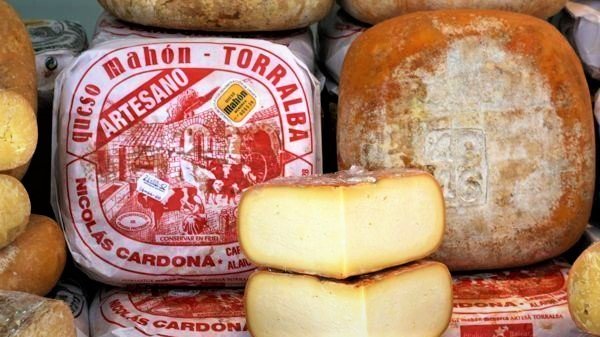
Exploring Menorcan gastronomy is an essential part of experiencing the island’s culture and lifestyle. Whether you’re indulging in seafood delights, savoring local cheeses, or enjoying traditional pastries, the island’s culinary offerings promise to leave a lasting impression and add a delicious dimension to your trip.
Menorca is an enchanting destination that promises an authentic and peaceful Mediterranean escape. With its pristine beaches, fascinating history, and warm hospitality, the island offers a unique blend of relaxation and exploration for every traveler. So, if you seek a destination off the beaten path, where natural beauty meets cultural richness, it’s time to set sail for Menorca, Spain, and create memories that will last a lifetime.
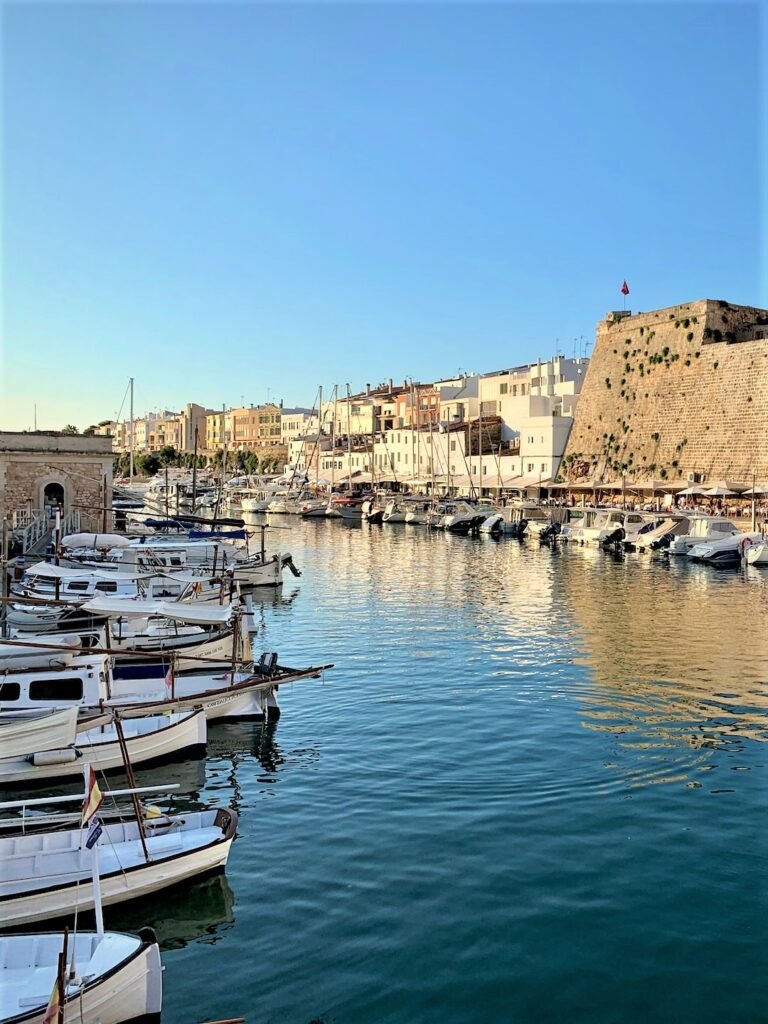
All our blogs in one place, see here.

